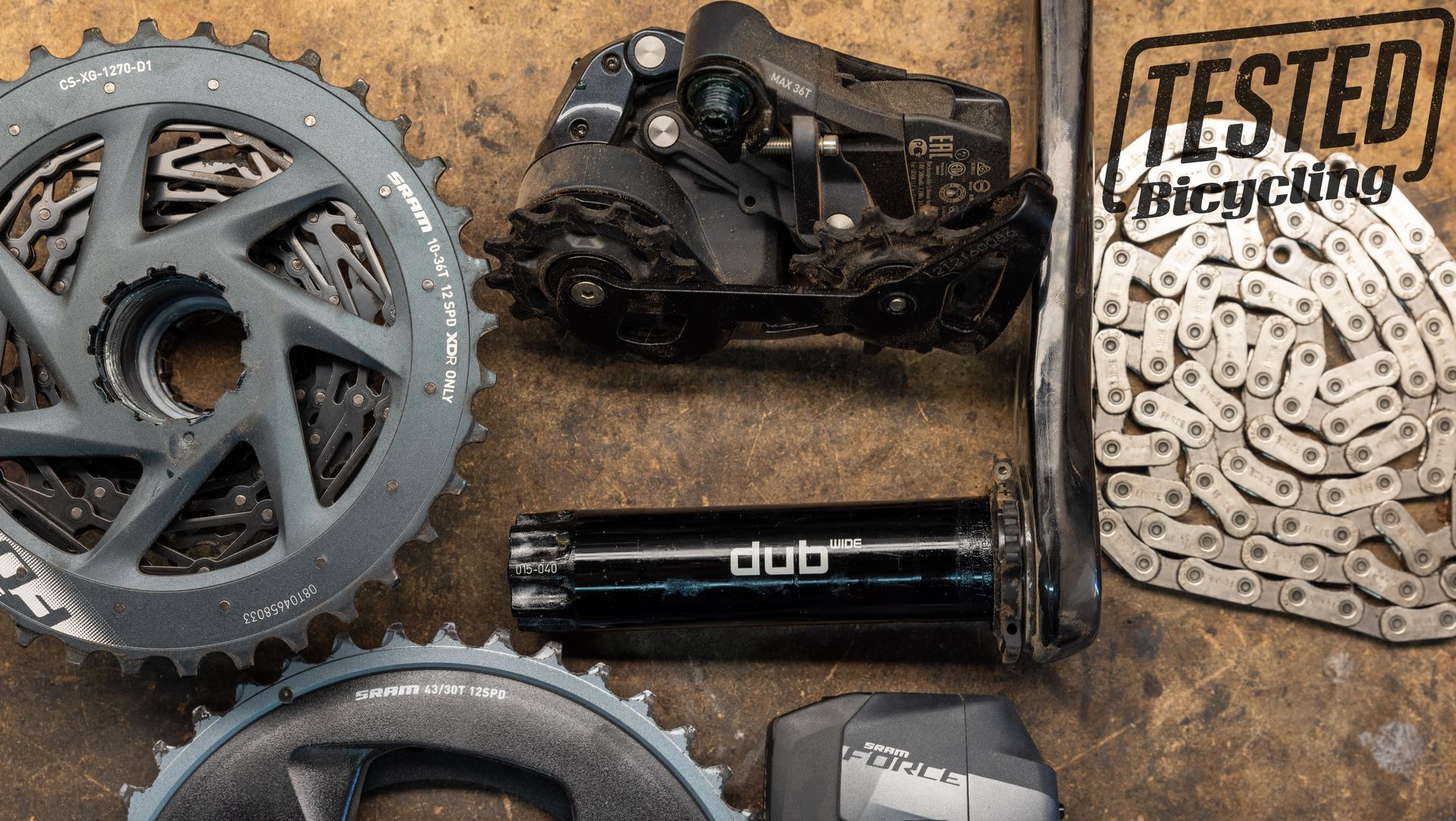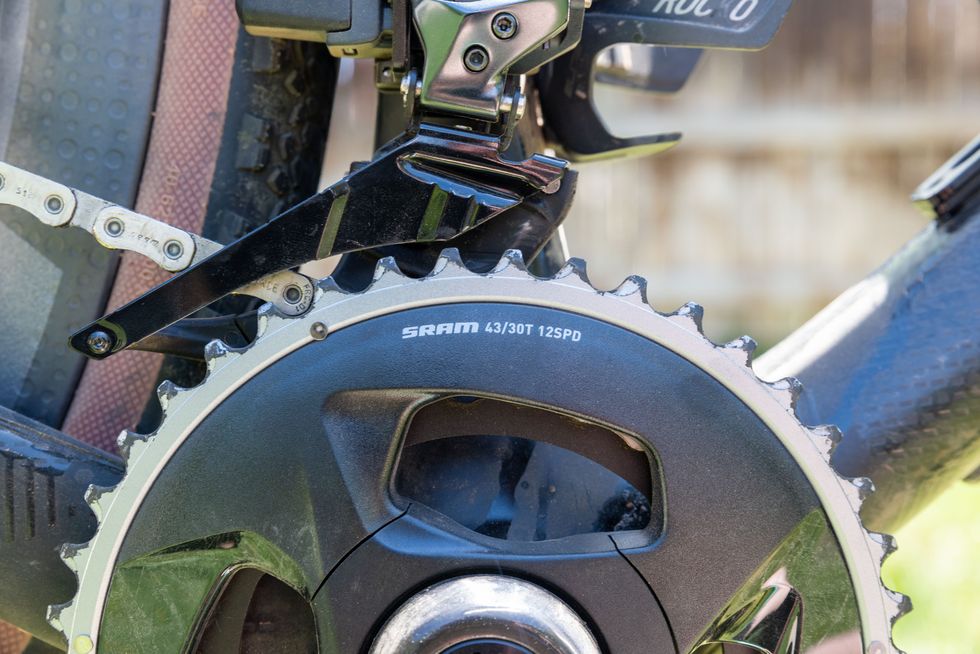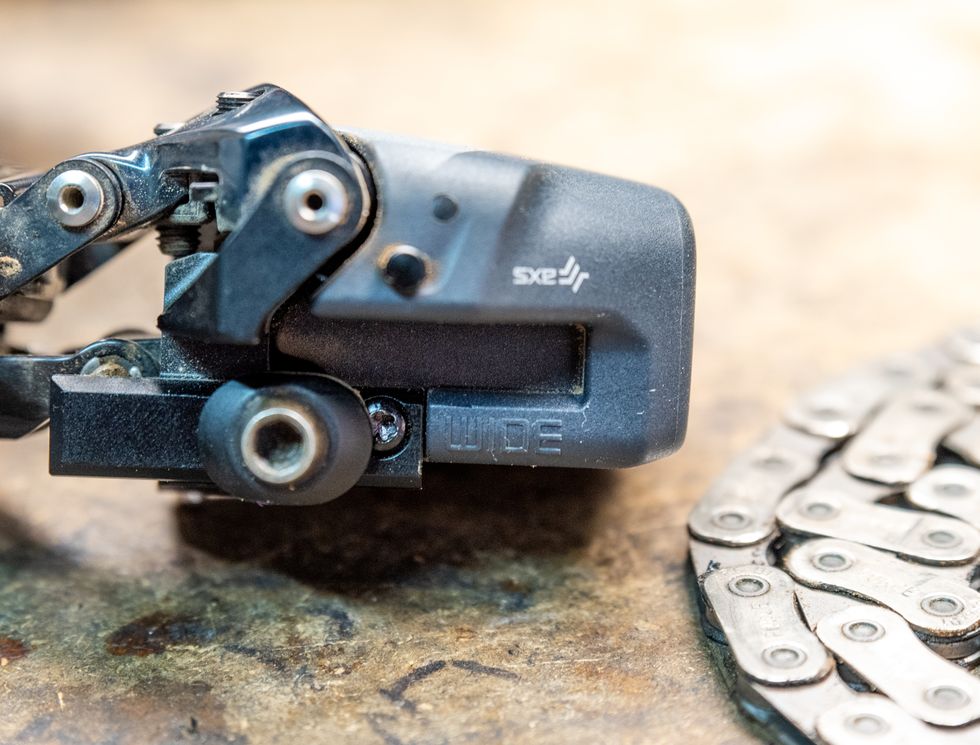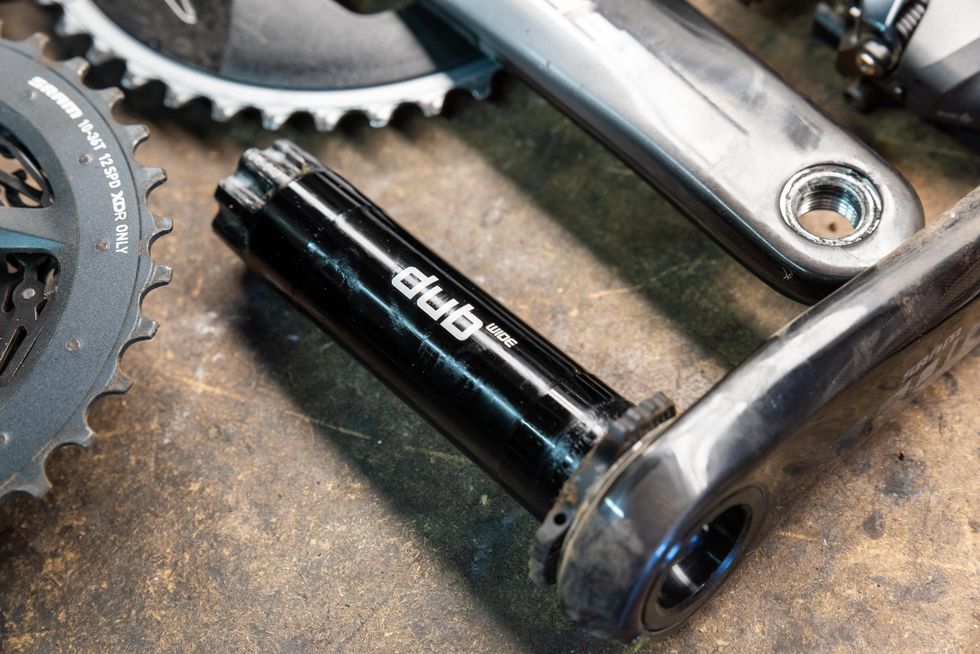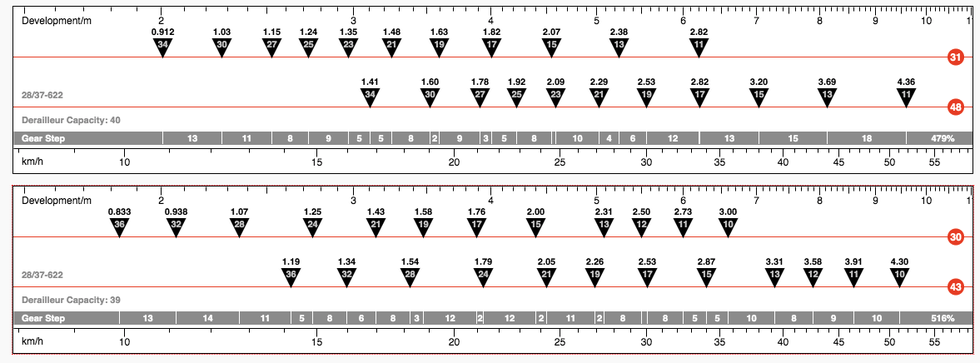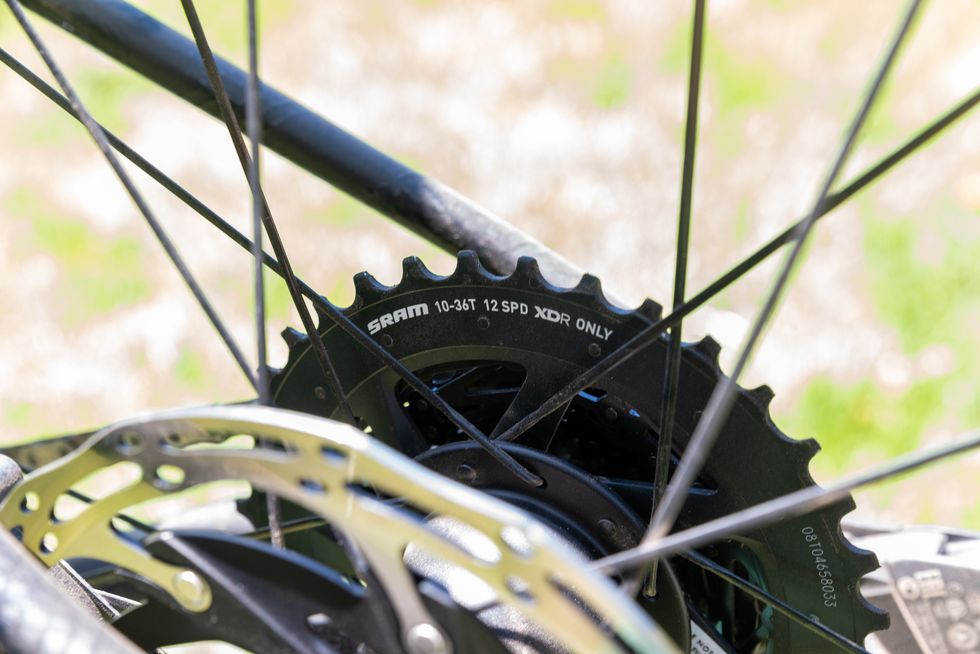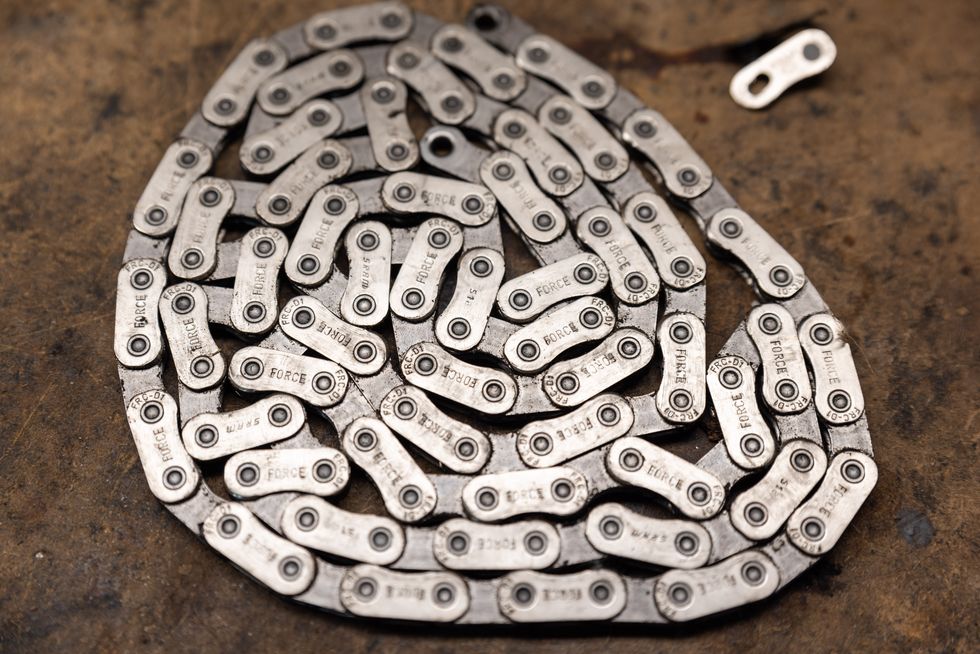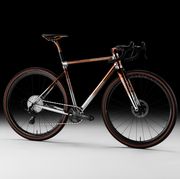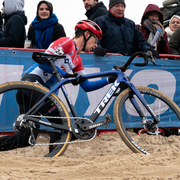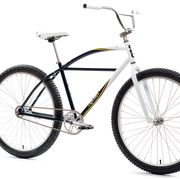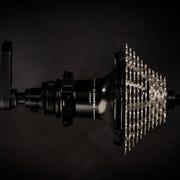The Takeaway: New parts offer lower gearing options for SRAM’s eTap AXS 12-speed groups.
- New 10-36 cassette option
- New crank with 30/43 chainrings
- Cassette and crank both require updated derailleur
- Can mix and match the new parts with existing eTap AXS parts
Prices: $185 (10-36 cassette), $420 (Wide crank with 30/43 rings), $490 (36t compatible rear derailleur, no battery), $350 (Wide front derailleur, no battery), $55/each (eTap battery)
Weights: Cassette (301g), 36t compatible rear derailleur, no battery (306g), Cranks with 30/43 rings, 170mm (699g), Wide front derailleur, no battery (160g), eTap battery (25g/each)
When SRAM rolled out the new Force eTap AXS group last year, the lowest 2x option offered was a 10-33 cassette and a 33/46 chainring combo. But that 1:1 low gear wasn’t quite low enough to meet the needs of the growing gravel and adventure market, or enthusiast road riders who need an easier gear to spin on hard rides.
SRAM hopes to address these needs with new gearing options for its AXS 2x groups. The new parts are a 10-36 cassette, and a new crankset with 30/43 chainrings in the Force range (but compatible with Red AXS as well). Combine the new options and it achieves a 1:0.883 low ratio, making those long, steep, and tough climbs more bearable.
Lower Gears
There are new gearing options for both ends of the drivetrain. At the rear, a new 10-36 cassette joins the existing AXS options (10-26, 10-28, 10-33). Up front, there’s a new 30/43 ring option—this is in addition to the existing AXS 2x options (33/46, 35/48, 37/50).
The new cassette may be paired with any of the AXS chainring options, including the new 30/43. And the new chainring option is compatible with most of the AXS cassette options, including the new 10-33 (the exception is the 10-51 Eagle cassette which is for 1x setups only).
Pair the 10-36 cassette with the 30/43 rings, and you have SRAM’s lowest 2x12 gearing option: a 1:0.883 ratio.
New Derailleurs
The new cassette and ring options are, unfortunately, not compatible with existing AXS derailleurs.
There is a new rear derailleur with longer pulley cage for the 10-36 cassette. This is backwards compatible to SRAM’s eTap AXS 10-28 and 10-33 cassettes as well, but not compatible with SRAM’s 10-26 cassette.
The new front derailleur is compatible with any SRAM ring combination on the Wide crankset.
New Cranks
The 30/43 rings mount to a new 94mm BCD spider—other Force chainrings use a 107mm BCD spider. At present, this spider and ring combo only come paired to a modified version of the existing Force AXS cranks.
The modification is a wider SRAM DUB (28.99mm diameter) axle. This bumps the chain line out to 47.5mm (from 45mm—the wider chain line is the reason for the new Wide front derailleur) and increases the crank’s stance (q-factor) 2.5mm per side, 5mm total, for a total width of 150mm.
By moving everything outboard a bit, maximum tire clearance increases to 700x45 or 27.5x2.1. The longer axle also makes the crankset compatible with most mountain bike BB standards. About the only thing this crankset won’t work in is Trek’s BB90 standard.
It is possible to mount SRAM’s other rings (either the 107mm BCD spider or the integrated rings) to the wider crank as all of SRAM’s AXS cranks use the same eight-bolt spider interface. The Wide front derailleur will work with any SRAM eTap AXS ring combination mounted to the wide crank.
Note that this crank also requires a BB with the correct spacer arrangement for the wide axle—SRAM designates these by adding WIDE to the product description. The correct spacers are available separately to make existing DUB BBs compatible with the wider axle.
Lower Gears Not Low Cost
The new lower gearing components cost the same as SRAM’s existing parts. So, if you’re buying a complete group, getting the lower gearing won’t cost you any extra. Current price of a Force 2x group with disc brakes is $2,678. Complete Force-equipped bikes shouldn’t cost any more if equipped with the lower gearing.
If you’re already running AXS parts and you want to get on the lower gearing, it’ll cost you. The four parts cost $1,445: $185 (10-36 cassette), $420 (wide crank with 30/43 rings), $490 (36t compatible rear derailleur), $350 (wide front derailleur). Upgrading the rear gearing only is $675; upgrading just the front gearing will cost you $770 (plus some BB spacers).
How It Compares to Shimano’s GRX
SRAM positions the lower gearing options as suitable for any event that puts the rider in the saddle for a long period of time. But it also appears to be a response to Shimano’s excellent and well-received GRX810/815 gravel/cyclocross/adventure group.
GRX rolled out with a sub 1:1 option—cranks with 31/48 rings and an 11-34 cassette—and GRX cranks run a 2.5mm wider chain line for increased clearance (46.9mm chain line, 151mm stance).
The chart above, built at gear-calculator.com, shows how GRX (top) compares to Force AXS (bottom) with the 10-36 cassette and 30/43 rings. Force has a lower low and greater overall range, a benefit when riding on mixed surfaces and diverse terrain.
GRX wins on price: A complete Di2 (electronic shift) group costs $2,356 (Force is $2,678). A GRX810 mechanical group sells for $1,447, though there isn’t an analogous SRAM Force 12-speed group yet.
New Gears, Same Force AXS Performance
I’ve been on the new Force AXS low gearing for over a month now, giving me time to ride on the lower gearing and compare its performance to SRAM’s original Force AXS.
I’m not ashamed to admit that I love low gears. I’m a perpetually slow guy who’s usually a bit too pudgy, and I live in the mountains of Colorado. I’m way more bummed if I run out of gears on a climb than if I spin out on a descent. Nice low gears let me ride more comfortably and keep me on the bike longer. One of the benefits of electronic drivetrains that pair with a GPS cycling computer is they let me see what gears I actually use on a ride. And the data I’ve collected over the past few years shows me I don’t spend much time at the sharp end of the cassette.
So I’m all in favor of this lower gearing option. If I was building a gravel bike with SRAM AXS, I’d use the 30/43 cranks and 11-36 cassette for sure. And I’d definitely use the 36t compatible rear derailleur on an all-road bike and probably most road bikes. I’ve got little interest in SRAM’s 10-26 race-nerd cassette, and based on the test bikes I’ve received it’s not popular at the OE level either—losing the ability to use that cassette isn’t much of a downside. The 36-compatible rear derailleur weighs just a few grams more and offers better real world gearing options to real riders—that makes it a clear winner.
As far as its performance, I found no perceptible difference in the shifting speed or performance with the new cassette, chainrings, or derailleurs when compared to Force AXS with higher gearing.
Which is to say, SRAM’s Force AXS—in any form—provides 100 percent totally acceptably adequate shifting. It hits precise shifts consistently, and it is reliable. There is not a thing wrong with Force AXS shifting, and I’ve spent a lot of enjoyable hours riding with SRAM’s AXS.
But Shimano still offers better shifting performance—its GRX Di2 group shifts faster and cleaner than Force AXS. I know saying so will massively annoy the people I deal with at SRAM—all of whom I genuinely like. And with modern systems integration, a group needs to be evaluated on more than its shifting performance alone. When all things are considered, the competition between Force AXS and GRX Di2 is tight and complex (and best left to a separate article).
But I’ve been saying, “SRAM shifts fine, Shimano shifts better” for a long time, and I’m not alone in this sentiment. I’ll give SRAM all the credit in the world for its inventiveness and what it has done to make bikes better—which is genuinely a lot. But it is time for SRAM to demonstrate what its capable of and step up the shifting performance of its parts.

A gear editor for his entire career, Matt’s journey to becoming a leading cycling tech journalist started in 1995, and he’s been at it ever since; likely riding more cycling equipment than anyone on the planet along the way. Previous to his time with Bicycling, Matt worked in bike shops as a service manager, mechanic, and sales person. Based in Durango, Colorado, he enjoys riding and testing any and all kinds of bikes, so you’re just as likely to see him on a road bike dressed in Lycra at a Tuesday night worlds ride as you are to find him dressed in a full face helmet and pads riding a bike park on an enduro bike. He doesn’t race often, but he’s game for anything; having entered road races, criteriums, trials competitions, dual slalom, downhill races, enduros, stage races, short track, time trials, and gran fondos. Next up on his to-do list: a multi day bikepacking trip, and an e-bike race.
